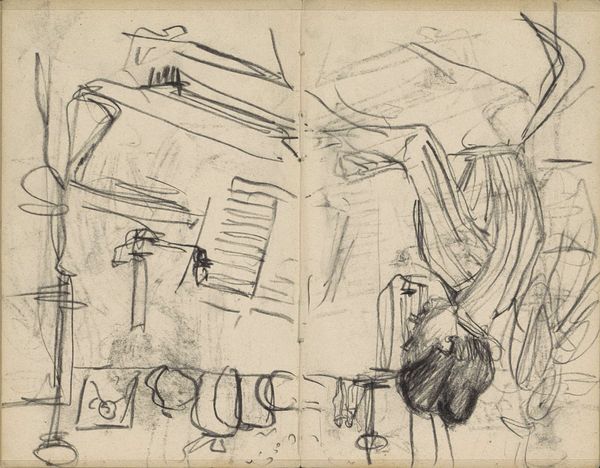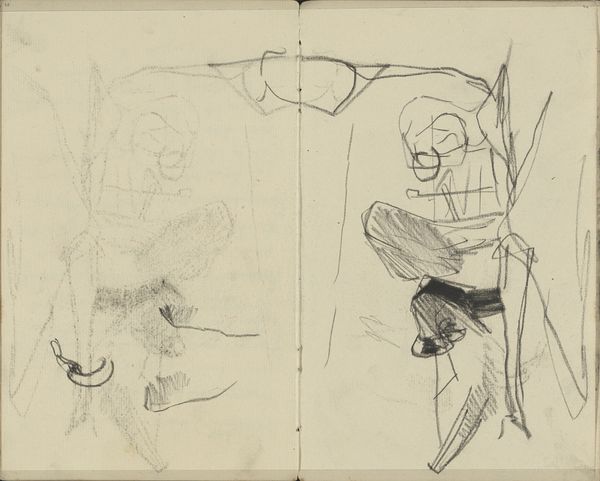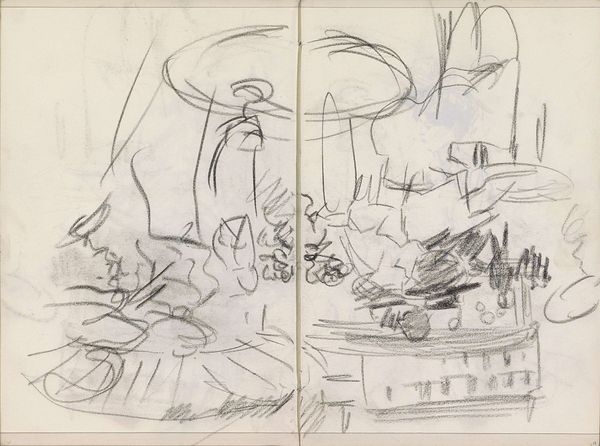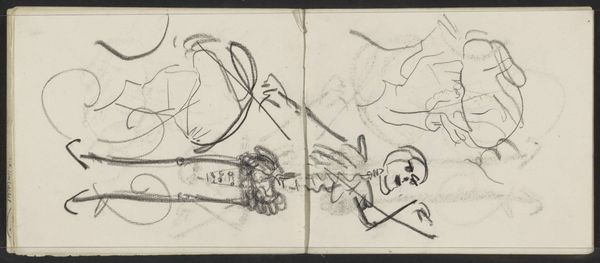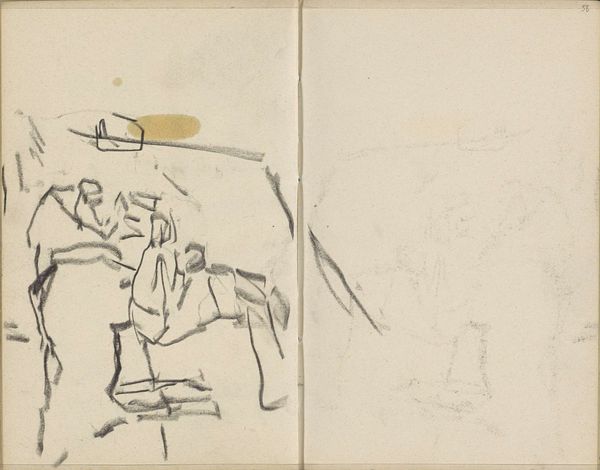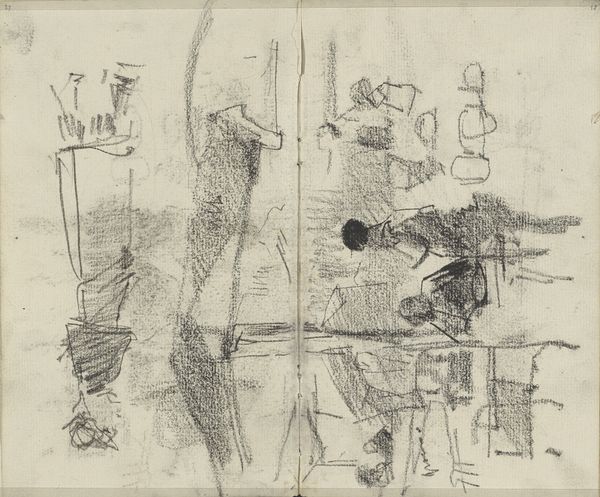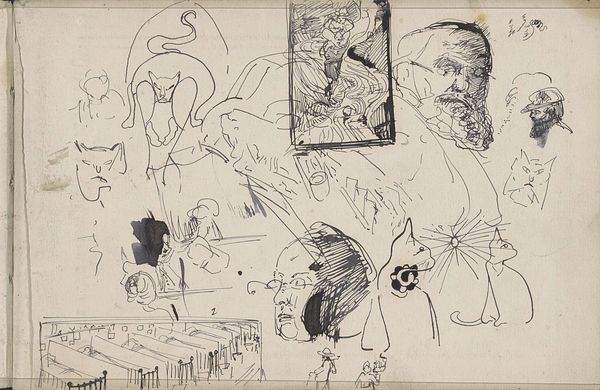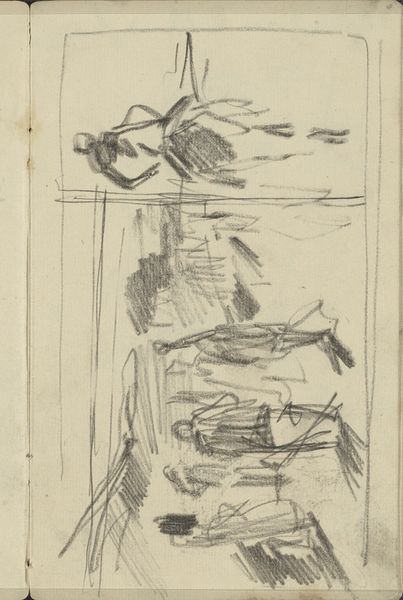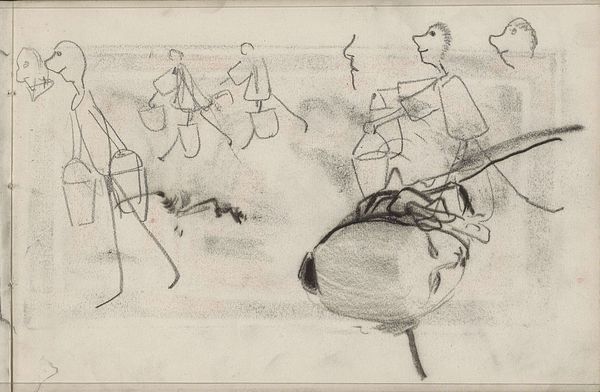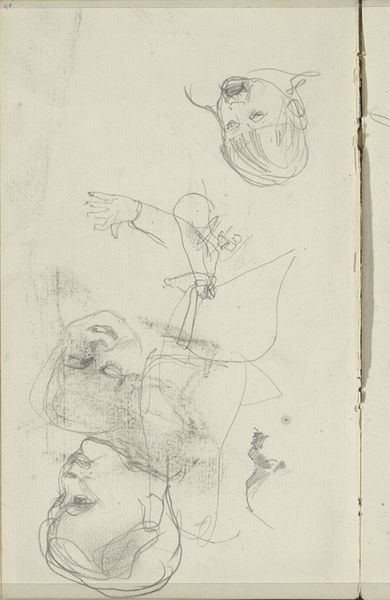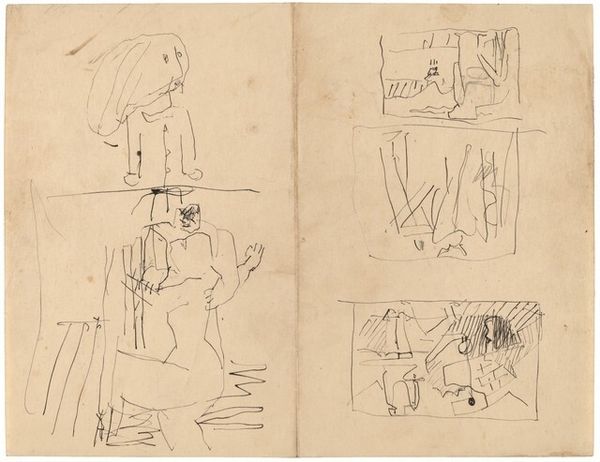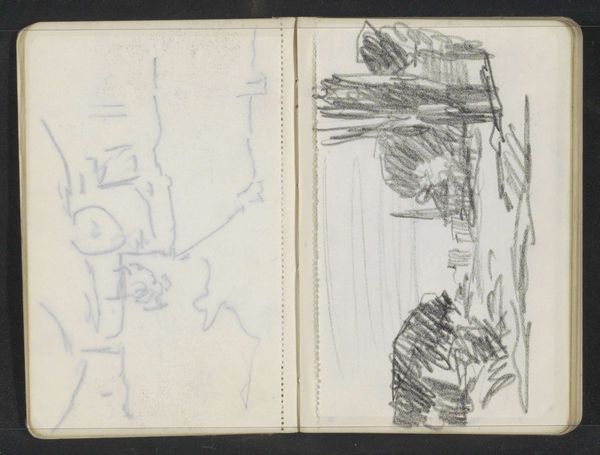
drawing, pencil
#
drawing
#
quirky sketch
#
face
#
impressionism
#
sketch book
#
landscape
#
figuration
#
personal sketchbook
#
idea generation sketch
#
sketchwork
#
ink drawing experimentation
#
pen-ink sketch
#
pencil
#
sketchbook drawing
#
storyboard and sketchbook work
#
sketchbook art
Copyright: Rijks Museum: Open Domain
Editor: This is "Figuren in de Visbank te Delft en figuurstudies" – “Figures in the Fish Market in Delft and Figure Studies” – a drawing made with pencil and pen by George Hendrik Breitner between 1887 and 1889. I find the unfinished quality intriguing; the quick lines and studies feel very raw and immediate. What stands out to you when you look at this page? Curator: For me, the material reality of this sketchbook page is key. The texture of the paper, the varying pressures of the pencil and pen—they all speak to Breitner's process. Consider the social context: Breitner documenting working-class life, the very act of observation and sketching becomes a form of labor. This wasn't about creating a polished product, but rather engaging with the material conditions of Delft, wouldn’t you agree? Editor: I can definitely see how his interactions are shaping this. The 'Visbank' refers to a fish market, right? Is it fair to say that by sketching here, he is implicitly recognizing that the everyday experience, labor and commercial aspects could also be subject of art? Curator: Precisely. And it begs the question: How does the means of production—the tools he uses, the time he spends—affect the value we place on this "art"? Is a quick sketch of a fishmonger less valuable than a grand oil painting, and if so, why? It compels us to really contemplate how society categorizes art. Editor: That’s a perspective I hadn’t fully considered. So instead of only seeing this work for its aesthetic value, it opens discussion of working-class individuals, manual labor, and the materiality of art? I will definitely look at sketches differently from now on! Curator: Indeed! Recognizing art’s engagement in labor and social hierarchies, we may learn something of its significance to materialist readings.
Comments
No comments
Be the first to comment and join the conversation on the ultimate creative platform.

